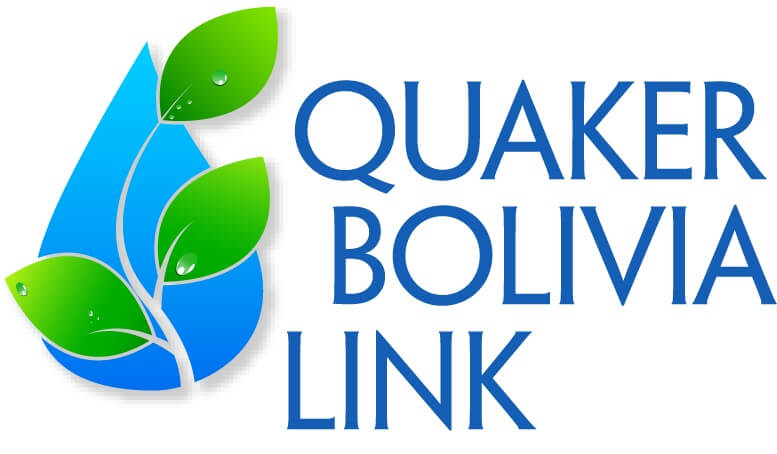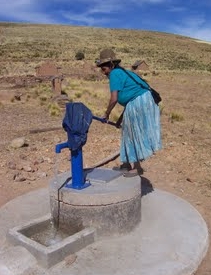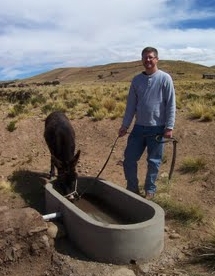[This report comes from Robert Vincent, our Projects Coordinator.]
Part of my work involves site visits to check on the projects we have financed. I try to visit with four or five families and get a sense of how they feel about a project, whether there are any ongoing problems, and how QBL is responding to those problems. I also meet with the project committee, which is in charge of organizing the community work days and training sessions, purchasing the materials for the project, and providing progress reports to the community. Although the committee members are elected by the community, we do ask that they include at least one woman.
During my recent trip to Bolivia I visited a water project in the village of Quilloma, in the Pacajes province, municipality of Corocoro. The trip was about three hours from La Paz, a welcome change from the usual four to five hours. As is the case in most of the communities where we work, the members of this community have access to cell phones, but they only turn them on occasionally in order to conserve their battery charge. Therefore, we were not able to call them beforehand to coordinate our visit. In any case, I usually prefer visiting the projects unannounced, since a formal reception may not allow me the time or space to visit with individual families. Fortunately, while entering the community, we saw one of the committee members who was able to accompany us during our visit.
The project seems to be going really well. It has provided water pumps to most of the families, and small gravity-fed water systems for some families, where possible. One of the main differences from other projects is the addition of the water troughs for animals. The troughs are connected to the pump so that families can easily fill them.Filling them still takes quite an effort, but less than taking the animals to the river for water.
While the project seems to be doing very well, there were a couple of problems. First, some of the troughs were leaking. QBL provided the water committee with sealant to prevent leakage, but, unfortunately, the committee had not worked with the village to apply the paint. The other problem was that the pumps had been installed during the rainy season and now, during the dry season, two of them did not reach the water table. The staff person responsible for the project said he had already contacted the individual who installed the pumps, asking him to fix them. Despite these problems, overall, the project seems to be a success. I was glad to see that our staff is on top of things and I feel that they are appropriately balancing their involvement with the projects, letting the committee resolve issues that come up instead of trying to solve each one from the top down. This approach promotes projects that are more sustainable in the long term because the villages feel responsible for solving their own problems, although QBL staff members are available for providing technical guidance.
Some problems are especially challenging. An elderly woman we visited said she had difficulty pumping enough water to fill the trough for her animals. I tried to fill the water trough myself, and after about a minute of pumping, I was exhausted. A gravity-fed water system would obviously be better for everyone, but we always have to consider the cost of that sort of system, which would require piping water from long distances, within the context of the best use of our available funding.
Despite these limitations, I am very happy with the outcome of this project. QBL is doing important work in Bolivia and we are changing lives in significant ways.
[More photos from Quilloma are available at https://picasaweb.google.com/rvincentqbl/Quilloma11?feat=directlink#]


